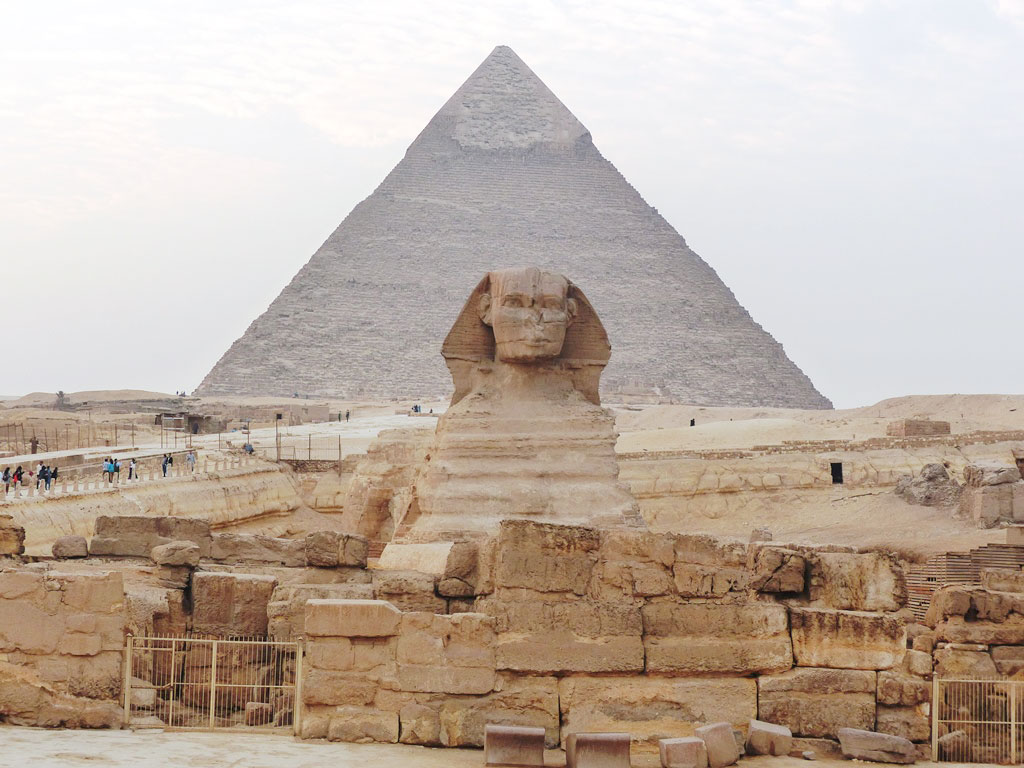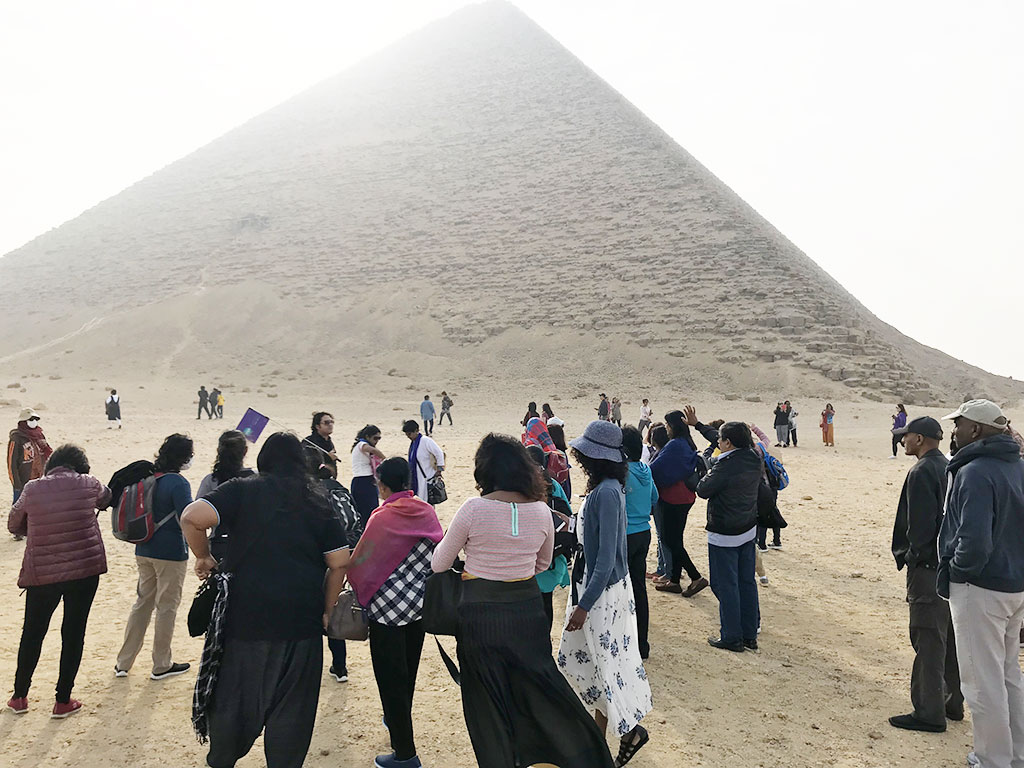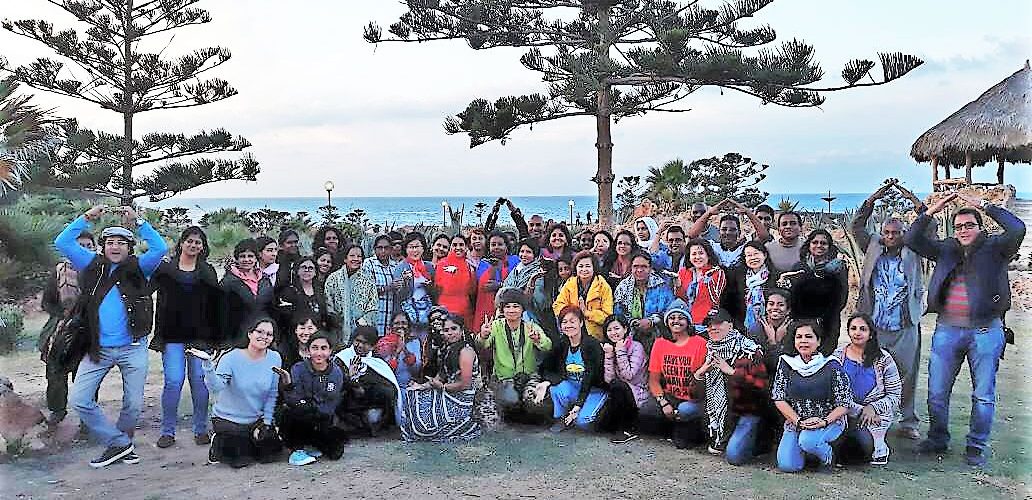By Kanien Keha
Travel makes one modest. You see what a tiny place you occupy in the world – Gustave Flaubert.
This quote aptly describes how I felt visiting Egypt as part of the tour organised by MAYI in December 2017. Egypt welcomed us with its remarkable pyramids, mighty Nile River, historic towering temples, mysterious underground tombs, hieroglyph decipherment, magnificent monuments, and splendid medieval architectures – its ancient past and modernization. With so much enriching experiences just waiting to unfold, Egypt brought out the explorer in all of us.
Ancient Egypt is one of the oldest and long lasting world civilizations, with extensive scientific knowledge and many artistic and cultural achievements. Egypt stands apart as being ahead of its time. It’s fascinating to know that over 30 dynasties ruled ancient Egypt over 3,000 years across 3 kingdoms – from Old, to Middle and finally to the New Kingdom through the Greek’s Ptolemaic Dynasty. Adding on to the excitement is the discovery of the earliest manifestation of yoga in the hieroglyphs, paintings, and relics in the ancient Egyptian tombs and temples.
These were some of my favourite destinations, experiences and exploration as we journeyed the land of the Pharaohs:
Pyramids and The Giza Plateau


It was surreal to be standing at the Giza Plateau in the shadows of the Great Pyramid, a defining symbol of Egypt and the last of the Seven Wonders of the Ancient World. Even in its weathered condition, the sheer size of the Great Pyramid of Khufu, Khafre, Menkaure and the Great Sphinx (biggest monolith statue in the world) was magnificently overwhelming. Sans modern technology, the Egyptians felt they built the Great Pyramid at the center of the Earth. It is simply out of this world!
Yoga and Egyptology
It was absolutely fascinating to discover that Yoga existed in ancient Egypt. The Egyptian system of Yoga called Kemetic Yoga, is based on the practices of physical movements combined with controlled deep breathing and meditation; which was apparently developed by interpreting the hieroglyphic texts of Kemet (ancient Egypt) and the images of Yogic postures on the walls of the temples and artifacts found in King Tutankhamun’s tomb. I was intrigued with the many similarities between words in Sanskrit and the ancient Egyptian language as well as symbols that relates to Yoga. For example, the word Hatha, which designates the general system of Yoga relating to the moon and sun, is similar to the ancient Egyptian word ‘Hathor’, which was originally pronounced ‘Het Heru’ by the ancient Egyptians. Hathor or Het Heru is the goddess of the moon and sun. Isn’t that cool?


During the attempt to decipher some of the symbols, postures and hieroglyphs that I had photographed, these were some of the ‘WOW’ facts that I discovered:
- The Sun Disk at the top of the head of Gods or Goddesses represents the Crown Chakra.
- The two serpents on each side of the Sun Disk represent the two primary nadis (energy channels), which are the ida and the pingala.
The hieroglyphic inscriptions make reference to eternity and the achievement of immortality. - The person/deity pictured in the posture is called Heh or Shu and is associated with life energy – the breath and the life force found in the air (prana).
- There were many unique poses that the Egyptians claim belongs to only ancient Egypt and not seen before e.g. the pose of Maat, Selkhet, and Ausar.
Cruising the Nile River
All we had to do was just kick back and cruise from Aswan to Luxor for 3 days, enjoying the cool breeze on the sun deck and soaking up the beautiful scenery along the Nile river banks. The Nile River is the longest river in the world. Many of the spectacular ancient monuments and archeological sites are strategically located along the river banks; some of the temples we visited were the Karnak Temple, Luxor Temple, Temple of Edfu, and Philae Temple.

Treasures of Khan el-Khalili

The city of Cairo is home to 25 million people. This is approximately 25% of Egypt’s population and about 80% of Malaysia’s. That’s huge! This explains why Khan el-Khalili, the largest bazaar of the Middle East located in Cairo, is filled with all the souvenirs you can possibly buy in Egypt. It’s a true paradise for bargain hunters! There is more to Khan el-Khalili than the bazaar. I was impressed with the beautiful medieval Mamluk architecture that houses the bazaar. Not to mention the winding alleys filled with cafes where we chanced upon an over 200 year old El Fishawy Café, the oldest one in Cairo.
Delicious Egyptian Cuisine
One of the best part of traveling is the culinary adventure. We treated our taste buds to Egyptian flavours and I particularly loved the fresh dates and persimmons, creamy ice creams and chocolates, varieties of hummus (especially pomegranate hummus), Tameya (Falafel), Koshary, Molokheya, Ful Medames (crushed Fava beans), and bird tongue soup. The desserts, however, were a tad too sweet for my liking, with the exception of Basbosa and Kunafa. A special mention goes out to the variety of Egyptian flat breads we relished; it was so soft and yummy. The Egyptians call it ‘Aish Baladi’, ‘Aish’ means ‘life’ which is how the Egyptians perceive bread since ancient times and ‘Baladi’ means ‘traditional or authentic’.
Temples and More Temples Cuisine

Most tourists visit Egypt to travel back in time while exploring the ancient temples. We visited so many temples and my favourites being the Temple of Horus, Philae Temple of Isis, Temple of Kom Ombo, Karnak Temple, and the Temple of Hatshepsut. The Karnak Temple is the world’s second largest religious site after Angkor Wat. In ancient times there was a 2km road lined by Sphinxes that connected the Karnak Temple to the Luxor Temple. This temple is home to 134 gigantic colonnades, filled with relics and hieroglyphs, arranged in 16 rows occupying a space of 50,000 sq ft. It takes approximately 9 adults, holding hands fully extended to encircle one of the pillars. An absolutely remarkable sight to behold!
The Valley of The Kings Cuisine
One of the most famous places for archaeologists and fans of ancient history is the Valley of the Kings. This is where the Pharaohs are buried. The Egyptians from the New Kingdom decided to move the tombs from the Pyramids to the secret underground chambers to prevent tomb robbers. National Geographic has labeled the Valley of the Kings as ‘the gateway to the afterlife providing a window to the past’. True enough, it was simply mind blowing visiting King Tutankhamun’s tomb and to find his mummy wrapped in a white sheet preserved in a glass casing only exposing his feet and head visible.
Egypt stands as an unforgettable travel destination with timeless treasures that are even more impressive in person. A definite must for those who relish sight-seeing.

